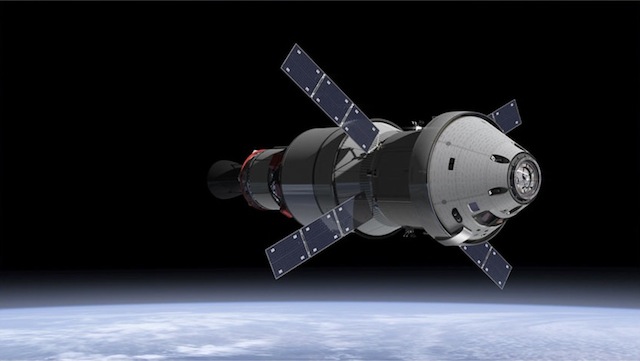SUMMARY
This is AI generated summarization, which may have errors. For context, always refer to the full article.

WASHINGTON DC, USA – The US and European space agencies announced a new partnership Wednesday, January 16, pairing a European cargo module with NASA’s Orion space capsule, which aims to take astronauts into deep space.
The agreement covers Orion’s first planned mission, set for 2017, which will take the spacecraft on an unmanned fly-by around the moon.
But NASA has bigger goals for Orion, hoping it will one day take humans beyond low-earth orbit — for the first time since Eugene Cernan left the last footprints on the moon in 1972 — and ultimately to an asteroid and to Mars.
The US space agency said Orion’s development may have started in the United States but that its final shape will be determined by an international effort.
“Today you get to see the first step of a cooperation as we look beyond lower orbit,” said William Gerstenmaier, NASA’s deputy director for manned exploration.
“Space exploration has to be international,” he emphasized during a news conference at the Johnson Space Center in Houston, Texas.
The US, European and other space agencies already cooperate extensively at the International Space Station (ISS), while more ambitious missions further into space have remained national affairs.
But a recent report by the US National Academy of Sciences concluded that NASA’s $18 billion-a-year budget would not cover all its missions, and future plans must incorporate international partners.
The European module, called an Automated Transfer Vehicle, or ATV, has already been resupplying the International Space Station since 2008.
The modified ATV will sit directly below Orion’s crew capsule to provide propulsion, power, thermal control, as well as to supply water and gas to the astronauts.
Using the European-designed module “does not save money for NASA,” Gerstenmaier said, but it does allow NASA to incorporate a pre-tested design, without going through the time and effort of testing a new system on its own.
ESA also cheered the agreement, with its human spaceflight director Thomas Reiter telling reporters: “This cooperation opens new perspectives.”
“NASA’s decision to cooperate with ESA on their exploration program, with ESA delivering a critical element for the mission, is a strong sign of trust and confidence in ESA’s capabilities,” Reiter added in a statement.
NASA Deputy Administrator Lori Garver meanwhile announced a newly planned addition to the ISS using the orbiting laboratory to test expandable space habitat technology.
The US space agency has awarded a $17.8 million contract to Bigelow Aerospace to provide a Bigelow Expandable Activity Module (BEAM) that it is due to arrive at the space station in 2015 for a two-year technology demonstration, she said.
“Today we’re demonstrating progress on a technology that will advance important long-duration human spaceflight goals,” Garver said. “NASA’s partnership with Bigelow opens a new chapter in our continuing work to bring the innovation of industry to space, heralding cutting-edge technology that can allow humans to thrive in space safely and affordably.”
The BEAM is due to launch aboard the eighth SpaceX cargo resupply mission to the station contracted by NASA. – Rappler.com
Add a comment
How does this make you feel?
There are no comments yet. Add your comment to start the conversation.